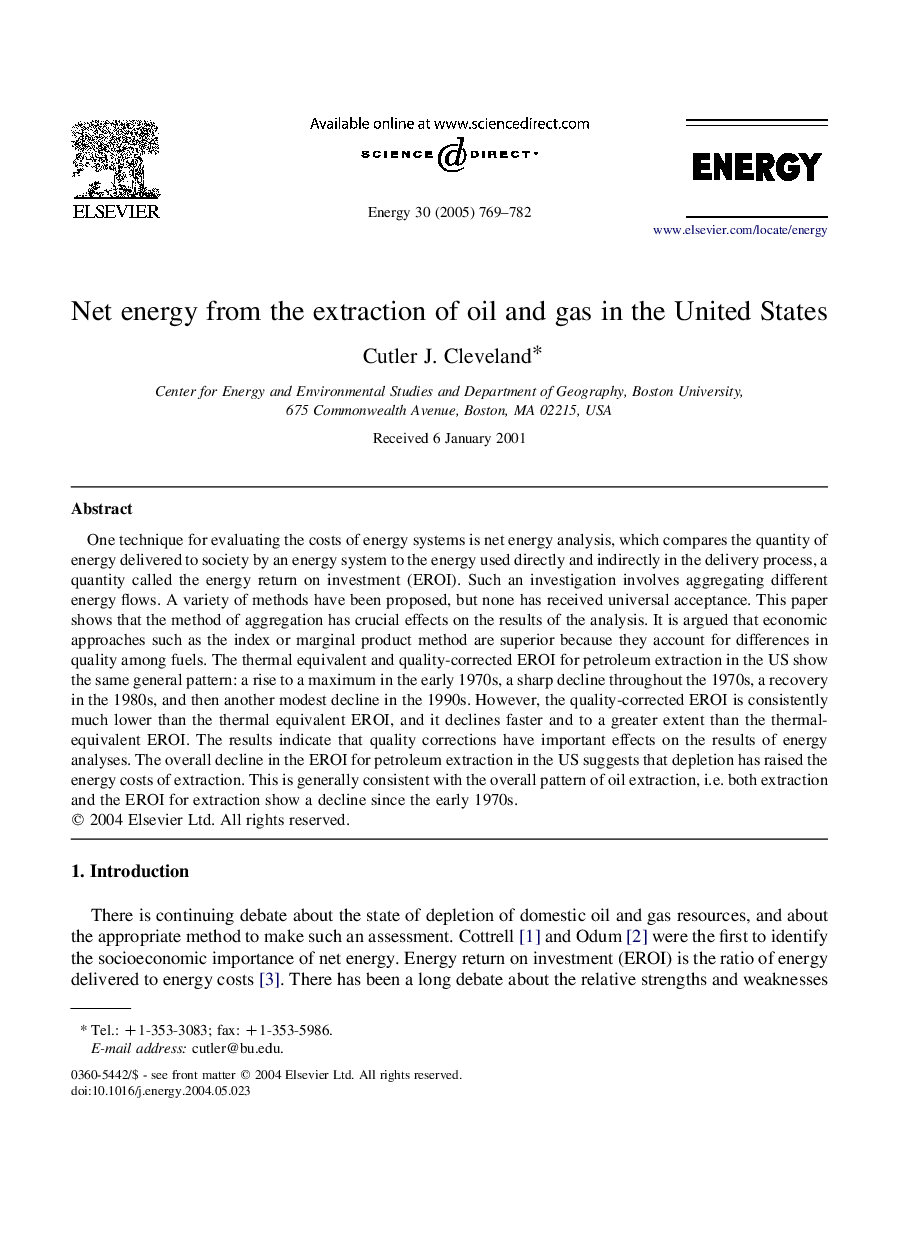| Article ID | Journal | Published Year | Pages | File Type |
|---|---|---|---|---|
| 10682958 | Energy | 2005 | 14 Pages |
Abstract
One technique for evaluating the costs of energy systems is net energy analysis, which compares the quantity of energy delivered to society by an energy system to the energy used directly and indirectly in the delivery process, a quantity called the energy return on investment (EROI). Such an investigation involves aggregating different energy flows. A variety of methods have been proposed, but none has received universal acceptance. This paper shows that the method of aggregation has crucial effects on the results of the analysis. It is argued that economic approaches such as the index or marginal product method are superior because they account for differences in quality among fuels. The thermal equivalent and quality-corrected EROI for petroleum extraction in the US show the same general pattern: a rise to a maximum in the early 1970s, a sharp decline throughout the 1970s, a recovery in the 1980s, and then another modest decline in the 1990s. However, the quality-corrected EROI is consistently much lower than the thermal equivalent EROI, and it declines faster and to a greater extent than the thermal-equivalent EROI. The results indicate that quality corrections have important effects on the results of energy analyses. The overall decline in the EROI for petroleum extraction in the US suggests that depletion has raised the energy costs of extraction. This is generally consistent with the overall pattern of oil extraction, i.e. both extraction and the EROI for extraction show a decline since the early 1970s.
Related Topics
Physical Sciences and Engineering
Energy
Energy (General)
Authors
Cutler J. Cleveland,
